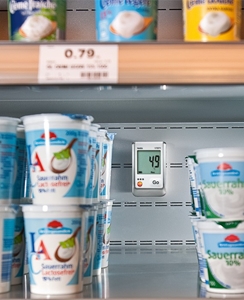Organisations involved in the handling of food – whether in its production, preparation, transport or storage – are required to abide by stringent sets of regulations to protect the wellbeing of consumers. These can vary widely by country, and even among different regions within a single nation.
There are many protocols, however, that cross international borders and govern food safety around the world, providing a consistent framework in which businesses can operate. The Hazard Analysis and Critical Control Point (HACCP) guidelines are one such example, and one of the most important for Australian food businesses to consider.
An internationally recognised and implemented food safety framework, the HACCP provides organisations in the industry with actionable and easy to follow guidelines to ensure the quality and safety of their products. The system includes steps to follow in identifying and controlling food risks in all stages of the supply chain, ensuring not only the wellbeing of customers but also the reputation of the company.
Here we break down what the HACCP entails, what it means for your business and the tools that can assist you in this area.
The 7 principles of HACCP
At the core of the HACCP system is a set of seven principles, all of which businesses in the food sector must fulfil in order to ensure maximum product quality and safety.
1. Hazard analysis. As the first and most fundamental step, businesses must carry out a thorough analysis of their food production, handling, transporting or storage systems to identify any possible hazards to safety. These risks can be of a biological, physical or chemical nature. Steps that can be taken to eliminate these hazards can then be explored.
2. Critical Control Points (CCP). A critical control point, as defined by the HACCP, is “a point, step or procedure at which control can be applied and a food safety hazard can be prevented, eliminated or reduced to acceptable levels”. These identify the specific points in the business’s processes or systems that present significant risk and where safety measures can be implemented.
3. Critical limits. Next, it is important to establish critical limits, which outline thresholds which certain parameters must adhere to. These parameters can include factors such as temperature, humidity or time.
4. Critical control monitoring. This principle fuses the previous two, establishing monitoring procedures to assess the critical limits of each CCP. This means outlining specifics such as when, how and by whom the measurement will be taken.
5. Corrective action. Appropriate corrective steps – to be actioned if the critical limit for any CCP is exceeded – are laid out in this principle.
6. Verification procedures. Any activities that fall outside the realm of principle four (monitoring), but are still necessary to the overall validity of the HACCP, are identified in this principle.
7. Record keeping. Lastly, a comprehensive system to keep accurate records pertaining to all the above principles must be implemented and adhered to if a company is to successfully implement HACCP.
Do you have the right tools for the job?
The majority of the seven HACCP principles require the use of special tools and equipment to ensure a business is meeting standards. Armed with the latest, state of the art measuring tools, companies can keep accurate tabs on their products and processes and ensure nothing slips through the gaps.
testo stocks a wide range of HACCP-certified measurement tools that enable your business to ensure it is adhering to these stringent regulations, no matter where in the supply chain it operates. The testo 106, for instance, is a vital tool for anyone involved in the preparation of food, with an accurate thermometer to gauge temperature levels.
Meanwhile, for those involved in the transport or storage of food, a data logger such as the testo 175 T1 can help ensure the optimum temperature and conditions are maintained at all times, to avoid compromising the safety of your products.









 Reduce cooking oil costs while ensuring quality
Reduce cooking oil costs while ensuring quality Expert knowledge on CO2 monitoring
Expert knowledge on CO2 monitoring Refrigeration knowledge - in 3 modules
Refrigeration knowledge - in 3 modules



